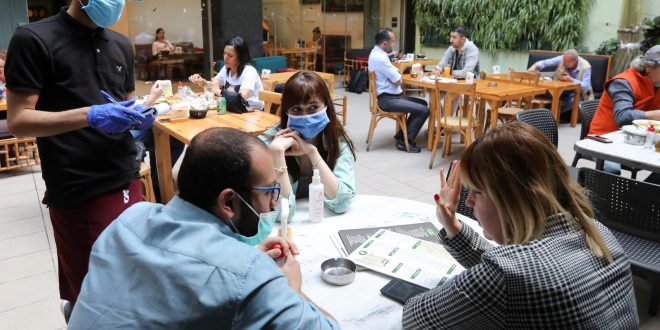Coronavirus transmission is not black and white — some activities are riskier than others, while some should cause little worry.
As states start to reopen parts of their economies and people tire of an all-out quarantine, the risk level of various activities should be considered to make decisions about what’s safe and what should be avoided.
Harvard Medical School professor Julia Marcus recently argued in The Atlantic that we should remember risk is not binary, and an abstinence-only approach — like that used in some sex education — won’t help. “Likewise, asking Americans to abstain from nearly all in-person social contact will not hold the coronavirus at bay — at least not forever,” she wrote.
So we spoke to Dr. Susan Hassig, an associate professor of epidemiology at the Tulane University School of Public Health and Tropical Medicine in New Orleans, about the risk of going out to eat, gathering with friends, or opening mail.
While different activities are riskier than others by nature, you should always wear a mask when possible and try to keep a distance of 6 feet from others.
Actions like social distancing and wearing a mask (or the lack thereof) can alter risk level significantly.
Here’s what you should consider about various activities as restrictions start to lift across the country.
Medium to high risk: Gyms
Gym-goers should wear a mask when possible, Hassig said.
Equipment should be sanitized before and after each individual use, and social distancing should be enforced rigorously.
Medium risk: Restaurants (indoors)
Indoor dining at restaurants is risky because of air flow and the nature of people being in the same enclosed space for hours at a time.
To help mitigate the risks of eating in a restaurant, people should wear masks until their food is delivered.
Disposable materials, especially for items like menus, can also help.
Medium risk: Hair and nail salons
Hair and nail salons, which have opened in many states, are at a medium risk for infection, Hassig said.
Mask-wearing is critical, as it helps block particles from speaking or coughing from spreading easily. It also discourages employees and customers from touching their faces.
Hair and nail salon employees should be sure to wash their hands frequently, Hassig said.
Medium risk: Dates or gatherings with a couple of friends
When it comes to dates or gatherings with a very small group, the same questions apply as when getting together with a larger group.
Geography especially matters when it comes to dates or one-on-one activities. In an area with a lot of cases, like New York, the risk that your date could be contagious is higher than in a suburb with only a handful of cases.
Low to medium risk: Beaches
Social distancing on beaches can help lower the risk of enjoying a day in the sun.
But, it can also be hard to enforce because of the size of many beaches. Most beaches have many points of entry, so it would be difficult to limit capacity.
Low risk: Outdoor dining
Dining outdoors at a restaurant is actually a relatively low-risk activity as long as tables are kept at least 6 feet apart. Being outside allows air to flow more freely.
You should still wear a mask as often as you can, and be cautious of high-touch items like menus and condiments.
Low risk: Outdoor activities
When you’re on a hike or a walk in the park, you shouldn’t worry too much about quickly walking past someone on a path or trail.
While you should try to maintain a distance of 6 feet from others at all times, encounters of more than 15 minutes are riskier than walking past someone on a trail.
Outdoor activities are low risk if you stay with people from within your household. If you meet up with friends or family from outside of your household, that still counts as a gathering and proper precautions should be considered.
Low risk: Retail shopping
Shopping in grocery or clothing stores can be low risk if you keep distance from others and wear a mask.
Fitting rooms should be closed, or if people are allowed to try on clothes, anything that isn’t purchased should be quarantined for a couple of days, Hassig said.
The place in stores with the most risk is at the checkout, where your interactions with cashiers or other customers could spread the virus.
Low risk: Touching mail or groceries
There’s a low risk of catching the coronavirus from touching your mail or other items, like groceries.
Hassig said she personally doesn’t wipe down her groceries, though if you’re worried about it, you can keep non-perishable items in the grocery bag for a few days before using them.
You should still be cautious about touching high-traffic things like doorknobs and elevator buttons.
Business Insider
 Lebanese Ministry of Information
Lebanese Ministry of Information



